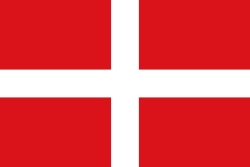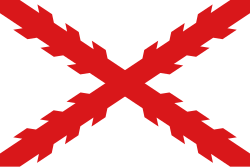Dlouhá turecká válka
| Dlouhá turecká válka | |||
|---|---|---|---|
| konflikt: Osmansko-habsburské války | |||
 Alegorie turecké války – vyhlášení války před Konstantinopolí | |||
| Trvání | 29. července 1593 – 11. listopadu 1606 (13 let, 3 měsíce, 1 týden a 6 dní) | ||
| Místo | Maďarsko, Valašsko, Balkán | ||
| Výsledek | nerozhodný, Žitvatorocký mír | ||
| Strany | |||
| Velitelé | |||
| |||
| Síla | |||
| |||
| Některá data mohou pocházet z datové položky. | |||

Dlouhá turecká válka, zvaná též třetí turecká válka, třináctiletá válka nebo patnáctiletá válka, byl ozbrojený konflikt mezi osmanskou říší a habsburskou monarchií na území Uher a Balkánu v letech 1593 až 1606; název patnáctiletá válka se používá, pokud se do ní zahrnuje i předchozí turecké tažení v letech 1591–1592, které dobylo Bihać. Válka skončila v zásadě nerozhodně mírem v Žitavské Toroni 11. listopadu 1606, který vydržel dalších 60 let.
Války se účastnily i české vojenské jednotky, popis některých událostí zanechal ve svých memoárech Jindřich Michal Hýzrle z Chodů.
Následky

Dlouhá válka skončila Žitvatorockým mírem dne 11. listopadu 1606 s nepatrnými územními zisky pro obě hlavní říše – Osmané získali pevnosti Eger, Ostřihom a Kaniža, ale předali Rakousku oblast Vácu (kterou okupovali od roku 1541). Smlouva potvrdila neschopnost Osmanů proniknout dále na habsburské území. Také ukázala, že Sedmihradsko leží mimo dosah habsburské moci. Ačkoli císař Rudolf ve válce nesplnil své cíle, přesto získal jistou prestiž díky odporu proti Osmanům, protože válku prezentoval jako vítězství. Smlouva stabilizovala situaci na habsbursko-osmanské hranici. Štěpán Bočkaj si udržel nezávislost, ale souhlasil se zřeknutím se titulu „uherského krále“.
Rudolf se sice vykresloval jako vítěz Dlouhé války, ale to ho neochránilo před vnitřními politickými boji uvnitř habsburského rodu. Ke konci války měl Rudolf obrovské dluhy vůči věřitelům, pohraničním jednotkám i polní armádě, udělal ústupky uherské šlechtě a zklamal říšská knížata Svaté říše římské, kteří financovali habsbursko-osmanskou hranici. Po uzavření míru s Osmany se Habsburkové obrátili jeden proti druhému. Tento vnitrodynastický konflikt je přinutil řešit dosud nevyjasněnou otázku Rudolfova nástupnictví a vyvrcholil tzv. Bratrským sporem, v němž byl bezdětný císař Rudolf postaven proti svému bratru Matyášovi.
Odkazy
Reference
V tomto článku byl použit překlad textu z článku Long Turkish War na anglické Wikipedii.
Literatura
- RYCHLÍK, Jan; PENČEV, Vladimir. Od minulost k dnešku. Dějiny českých zemí. Praha: Vyšehrad, 2013. ISBN 978-80-7429-387-0. S. 193–194.
Externí odkazy
 Obrázky, zvuky či videa k tématu Dlouhá turecká válka na Wikimedia Commons
Obrázky, zvuky či videa k tématu Dlouhá turecká válka na Wikimedia Commons
Média použitá na této stránce
Autor: Oren neu dag (talk), Licence: CC BY-SA 3.0
Royal flag of France before the Revolution (heraldic banner of "France modern")
Vatican flag before1808
Autor: Dahn, Licence: CC BY-SA 4.0
Flag of Moldavia under Prince Ieremia Movilă, from a trove of flags captured at Gurăslău by the Wallachian armies of Michael the Brave and kept as trophies by the Habsburgs. From an intermediary copy made by Georg Puchner. See Dan Cernovodeanu, Știința și arta heraldică în România, pp. 430–431. Bucharest: Editura științifică și enciclopedică, 1977, and Magazin Istoric, August 1976. Another reproduction was done by Károly Cserna.
Autor: R-41, Licence: CC0
Flag of italian Dalmatia
Autor: Facquis, Licence: CC0
Hungarian flag at the battle of Baia (1467) according to the Chronica Hungarorum.
Při zobrazení tohoto souboru lze snadno přidat orámování
Flag of the order of Saint Stephen
Autor: Sir Iain, eagle by N3MO, Licence: CC BY-SA 3.0
Banner of the Holy Roman Empire, with the combined Arms of Austria and Burgundy. Used during the reign of Maximilian I and Charles V.
Autor: Ddurbmonnejg, Licence: CC BY-SA 4.0
Naval and land fortifications flag of the Republic of Venice (XIV century-1797)
Autor: Oren neu dag (talk), Licence: CC BY-SA 3.0
Royal flag of France before the Revolution (heraldic banner of "France modern")
Autor: Germenfer, Licence: CC BY-SA 3.0
Fla of the Zaporizhian Sich.
Autor: Dekodrak, Licence: CC BY-SA 4.0
Flag of Wallachia during the reign of Vlad Vintilă de la Slatina (1532-1535).
Flag of Wallachia (cca. 1593 - 1611). This model was composed by Romanian heraldist Dan Cernovodeanu, after two (almost) identical contemporary descriptions of the flag of en:Michael the Brave (1593 - 1601) and en:Radu Şerban (1602 - 1611):
The flag is from white damascus on which is depicted a raven [sic!] with a red double cross and a red star in his berk, standing over a green juniper. (Ciro Spontoni, Historia della Transilvania, Venice, 1638)
The bird is a combination between aquila and raven, as it appears on contemporary seals.Autor: Ultimete, Licence: CC BY-SA 4.0
Flag of the w:Crimean Khanate during 15th century with the symbol of Giray Dynasty on blue background as shield flagtype according to the book "Kırım Hanlığı Tarihi Üzerine Araştırmalar" of Halil İnalcık.
Autor: Ningyou., Licence: CC BY-SA 3.0
Flag with the cross of Burgundy (saltire). Also named Cross of Burgundy flag. It was used in the Catholic Monarchy and in its viceroyalties such as New Spain and Peru. It was also used by Spain as a military or king's prosonal flag. Used by the Carlist movement.
Autor: Olek Remesz (wiki-pl: Orem, commons: Orem), Licence: CC BY-SA 2.5
Royal banner (not a flag) of the Polish-Lithuanian Commonwealth during the reign of the House of Vasa (1587-1668).
- Banner with three horizontal stripes of red, white and red.
- Coat of arms:1-4 Polish eagle (Piastowie's), 2-3 Lithuanian Vytis (Jagiellonczyk's), 5-8 Swedish three-crowns (Magnus IV's), 6-7 Swedish lion (Magnus I's), inescutcheon: 9 Vasa's arms.
- Crown:Royal crown.
- Order:Golden fleece
Autor: Dahn, Licence: CC BY 4.0
Flag of Transylvania in 1601, featuring the Báthory arms. Based on design captured at the Battle of Guruslău, as presented in von Aachen's allegory of the event. One of the several variants used in that battle (see plates by Cserna: A and B as well as contemporary engraving). The same design was also used in a swallow-tail variant (see reproduction in Magazin Istoric, July 2000, p. 38).
flag of the Duchy of Modena before 1830 according to Flags of the World
Depiction of an Ottoman "Zulfikar flag" typically in use during the 16th and 17th centuries.
The design is a rough approximation of the Zulfikar flag used by Selim I in the 1510s, File:Türkei Seidenfahne makffm.jpg
- " During the 16th-17th centuries the Zulfikar flags were widespread in Ottoman army and numerous red Zulfikar flags left in the battles in Europe are shown in museums and one can even see a red, triangular Zulfikar flag in the Doge Palace in Venice." Bariş Kılıçbay, 20 August 1999 (crwflags.com)
Original raster (.png) version uploaded by Ingoman.
Vector (.svg) version created by Kevyn using VectorMagic.com.Flag of Austria (1230–1934). Still in use today.
State Flag of the Savoyard States (late 16th - late 18th century).






























